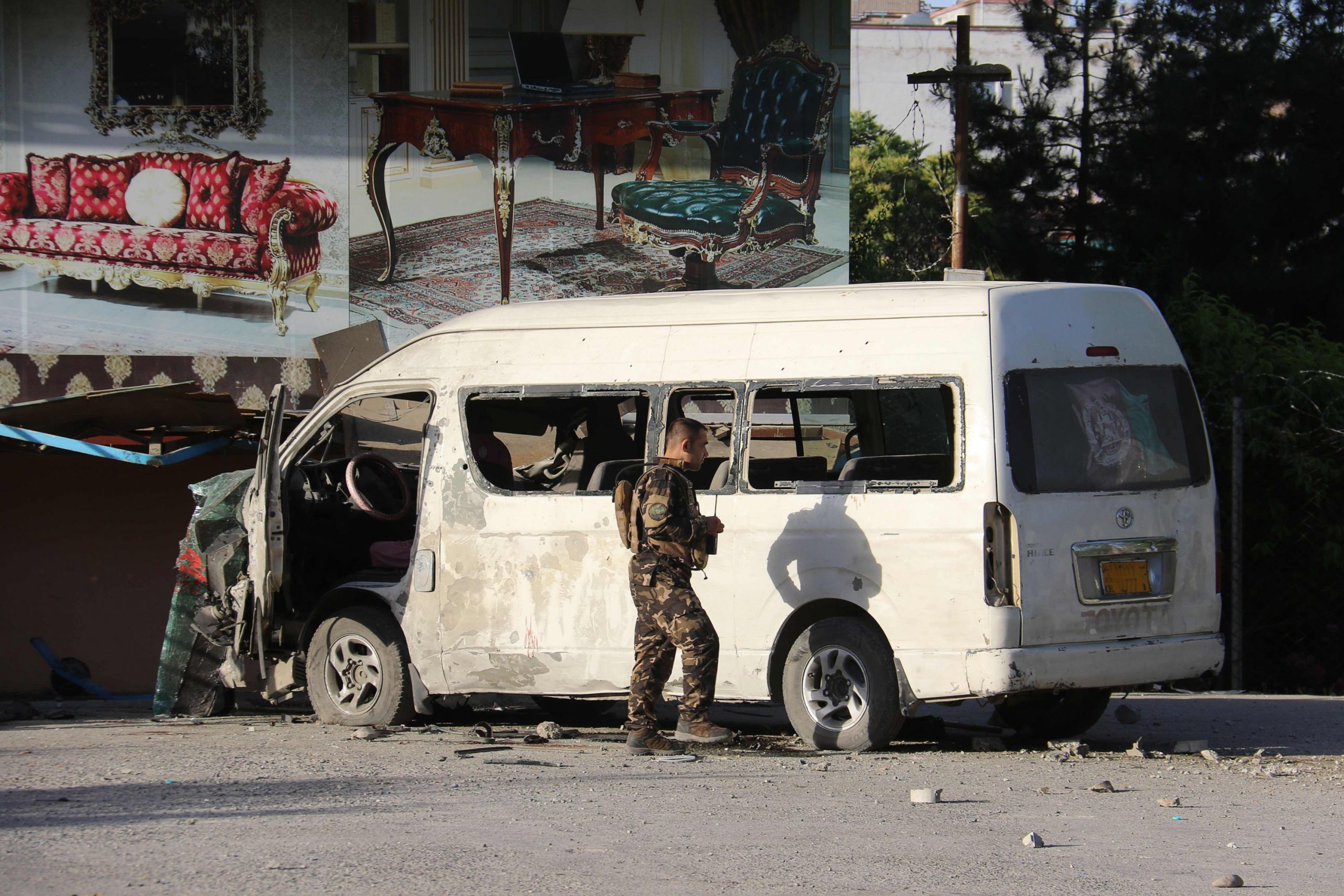A roadside bomb killed a television journalist and a technician in Kabul on Saturday, soon after a top Afghan official was appointed to lead peace talks with the Taliban, claiming his team was ready for the much-delayed dialogue.
Insurgents denied responsibility for the blast, which targeted a minibus carrying 15 employees of private television channel Khurshid TV.
The explosion punctuated an overall reduction in violence that has followed on from a three-day cease-fire the Taliban instigated May 24.
Just hours before the blast, Afghanistan’s former chief executive Abdullah Abdullah, who was appointed to head talks with the Taliban, said his team was positioned to start a dialogue.
Abdullah credited the general lull in violence for setting the tone for discussions.
“The cease-fire, a reduction in violence and the exchange of prisoners have all paved the way for a good beginning,” Abdullah said at his first press conference since taking on the role. “The negotiating team is ready to begin the talks at any moment,” he said. However, he insisted on a fresh cease-fire during the talks.
No group claimed responsibility for Saturday’s bombing in central Kabul.
Khurshid TV’s news director Jawed Farhad confirmed the attack, which left the station’s white minibus with extensive damage to its front end.
“The target of the blast was the vehicle of Khurshid private TV,” the interior ministry said in a statement. It was the second such attack targeting Khurshid employees in less than a year.
In August 2019, two passers-by were killed when a “sticky bomb” – a type of homemade explosive attached to vehicles with magnets – struck a similar Khurshid TV van in an unclaimed attack.
Afghanistan is one of the world’s deadliest places for journalists, who face many risks covering the country’s long conflict and who have sometimes been targeted for doing their job.
In a statement, the government said it condemned Saturday’s “heinous” attack.
‘All on the same page’
Afghanistan’s truce ended Tuesday night but violence since then has stayed relatively low, though government security forces have suffered some attacks that authorities blamed on the Taliban.
The cease-fire and general drop in violence has injected hope into Afghanistan’s peace process, which had earlier this month looked to be on the verge of collapse due to Taliban violence, which soared after the latter signed a deal with the U.S. in February.
Peace talks were initially scheduled to begin on March 10.
Momentum has also built thanks to the government’s release of hundreds of Taliban prisoners in recent weeks, as part of a swap that has also seen the militants free government security force captives.
Late Saturday, Afghanistan’s National Security Council spokesman Javid Faisal said the government had freed another 710 Taliban prisoners since Friday in an ongoing process that would fulfill its promise to release 2,000 insurgents in response to the Taliban ceasefire.
U.S. President Donald Trump’s administration has made it a priority to end America’s longest war and withdraw all troops by next May. U.S. officials have pushed the Taliban and government leaders to hold peace talks.
Abdullah was appointed to lead the process after he ended his bitter political feud with President Ashraf Ghani earlier this month.
He had announced himself as a rival president after rejecting the result of the September election, which incumbent Ghani eventually won amid fraud claims.
With the end of the dispute, the Afghan government appeared unified in terms of the peace process, a member of Abdullah’s negotiating team said.
“Now we all are united, all on the same page on the question of peace,” Matin Bek, a senior government official, told AFP.










Discussion about this post